Currently food wastage amounts in the Europe of the 27 countries to 89 million tons per year. This means 179 kg per capita, and the projection for 2020 is 126 million tones, that’s to say an increment of 40%. Up to a 50% of food gets wasted in EU households, supermarkets, restaurants and along the food supply chain each year, while 79 million of EU citizens live beneath the poverty line and 16 million depend on food aid from charitable institutions.
The European Union and its Member States launched in 2010 a growth’s strategy for the coming decade, the Europe 2020 Strategy. Objectives were set not only on innovation, education, climate and energy and but also on employment and social inclusion. 80 million people were at risk of poverty prior to the crisis. One of the key targets to be met by 2020 is a reduction of 20 million European living below the national poverty lines.
Taking into account this context, ISFOOD is a project created to give a valid response to the double problem existing nowadays in the EU: the large amount of food waste generated and, at the same time, the difficulties of access to adequate food by millions of families living below the poverty line threshold.
This objective will be accomplished through the implementation of a service of management and maximum utilization of the surplus food generated at a local (city) level that incorporate high technical capabilities.
Concept and approach
As explained before, ISFOOD intends to attack and to give a solution to two major problems that occur in a social and economic level in all countries of the European Union: on one side we find that great quantities of food are thrown and the other thousands of families are suffering from dietary restrictions.
Because this problem is not new, for more than two decades that a large number of associations and non-profit aimed at helping needy have created projects and services to channel part of this surplus food and take it to people who needs it. They usually work in a local and neighborhood level, and certainly have performed a great task that has greatly helped thousands of families.
However, some deficiencies have been detected in the operation of these services normally associated with a limited use of advanced technologies. In fact, almost all of the work is manual, with communications and transfer of information via phone and without using any tools of analysis, often not even a well-designed database.
ISFOOD is designed to optimize the management of surplus food, deriving the most part of this surplus to the families-recipients, but considering the daily needs of these families according to their composition.
The chart below shows the architecture of the proposed service:
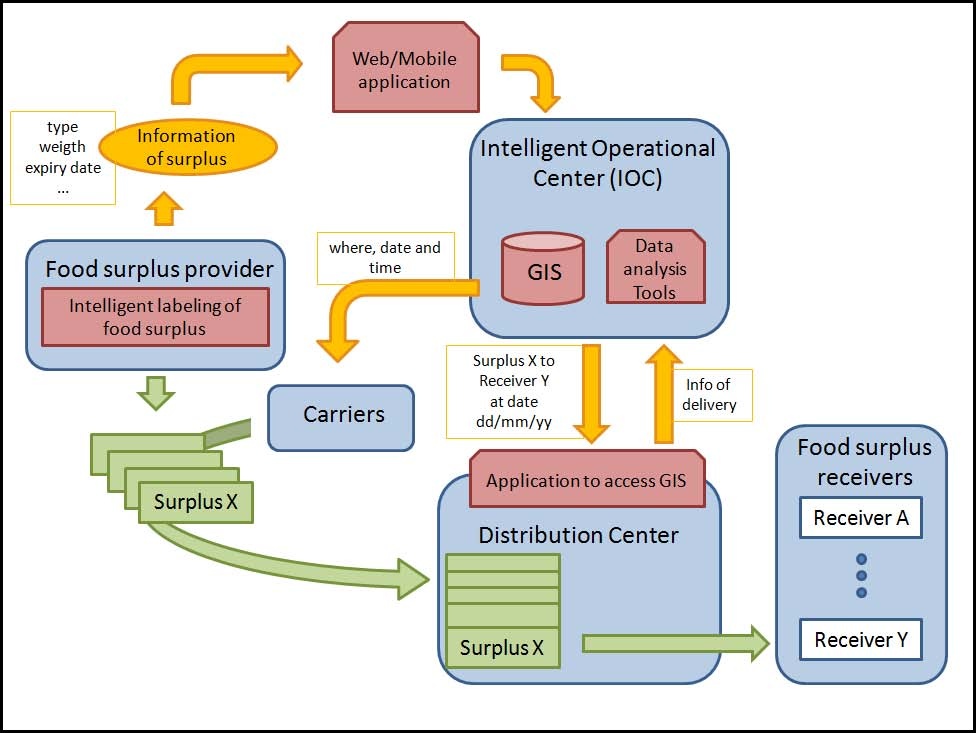
Figure 1 ISFOOD architecture
Ambition
As it is mentioned before, in all EU countries exist current social projects against food poverty and also some policies and initiatives oriented to avoid food waste. But, despite all work in this direction should be grateful, their impact is low due, in large part, to the limited use of new technological resources.
On this context, ISFOOD has been designed as a skilled state-of-the-art service, providing a technological upgrade of the current scenario.
Then, ISFOOD supports the technological innovation and considers it as a key point for providing maximum efficiency to the food aids services and for ensuring the full exploitation of food surpluses that are not currently channeled due to lack of resources.
Three different technological capacities have been integrated in ISFOOD:
- Smart Labeling: one of the partner, as a leading company in innovation in the world of labeling, will study the applicability of last technologies (RFID, EAS, QR, thermal sensors, chromatic indicators, etc.) on ISFOOD, and will provide a labeling system based on a combination of these technologies that will guarantee the automatic inventory, traceability and healthy status information of all type of food surplus.
- Innovative web/mobile application that transfers, at real time, inventoried food surplus into data warehouse on IOC. Three layers will compose it: a web browser as the first tier (presentation), an engine using dynamic web content technology, and the communications link with IOC database as the third tier (storage). Last web security protections will be implemented.
- The Intelligent Operator Center will be equipped with the latest milestones in servers, storage capacity, fast access and database management. It will provide the most innovative tools in terms of data analysis and prediction of behaviors and risks.
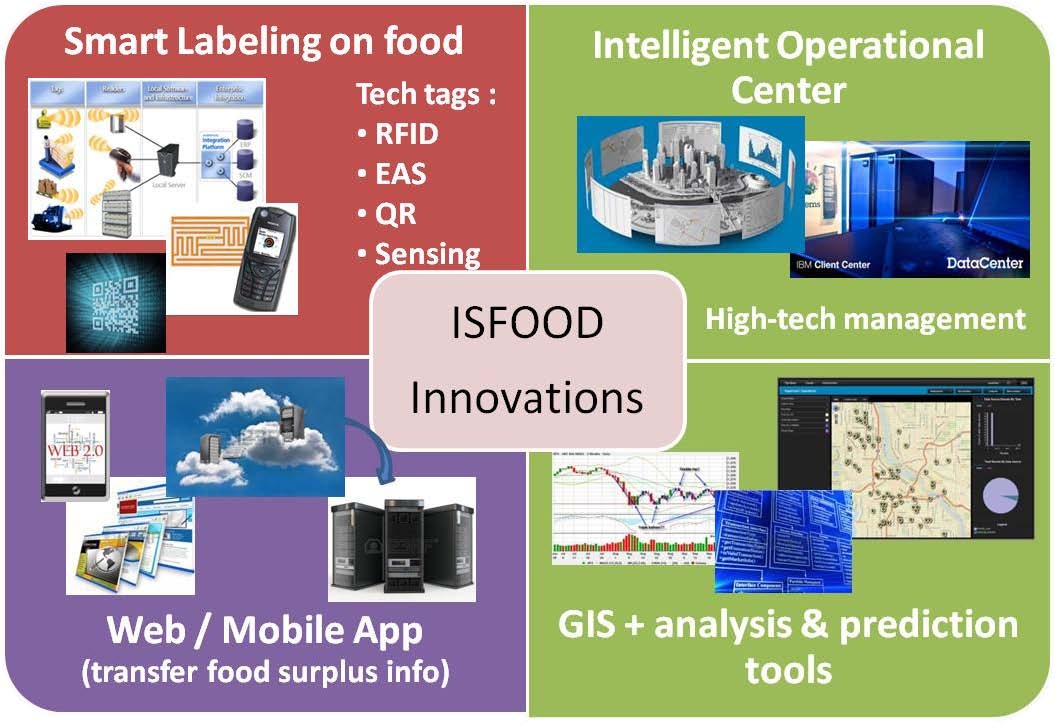
Figure 2 Technological innovations on ISFOOD
It is important to remark that ISFOOD aims to be a standard service extended Europe abroad, so the integration of the last technologies in ISFOOD will follow the standards yet published and approved by international organisms. Respect to the innovation actions launched in ISFOOD, the consortium guarantees that derived new products or implementations will be submitted to new standards requisition.
Consortium as a whole
The ISFOOD project is composed by a consortium of 6 partners who bring to the project a very complimentary trans-national expertise in different disciplines, talking in terms of technical or technological knowledge.
| Participant No. | Participant organization name | Country |
| 1 (coord) | IBM Client Center Barcelona | Spain |
| 2 | InTechnologies Ltd. | UK |
| 3 | SmartApp Co. | Holland |
| 4 | European Federation of Food Banks (FEBA) | France |
| 5 | Mercadona | Spain |
| 6 | Carrefour Italy S.A / Carrefour Portugal S.A. | Italy – Portugal |
Other relevant characteristic of ISFOOD consortium is that 3 of the 6 partners have a nonprofit motivation (in an economical aspect) to participate in ISFOOD. Their main reason for participating, in the case of FEBA, is its rationale, namely the fight against poverty food. The commercial partners, hypermarkets on Spain, Italy and Portugal, collaborate in the frame of its new policy to respect the environment and to obtain social recognition as companies with a strong corporate social responsibility.
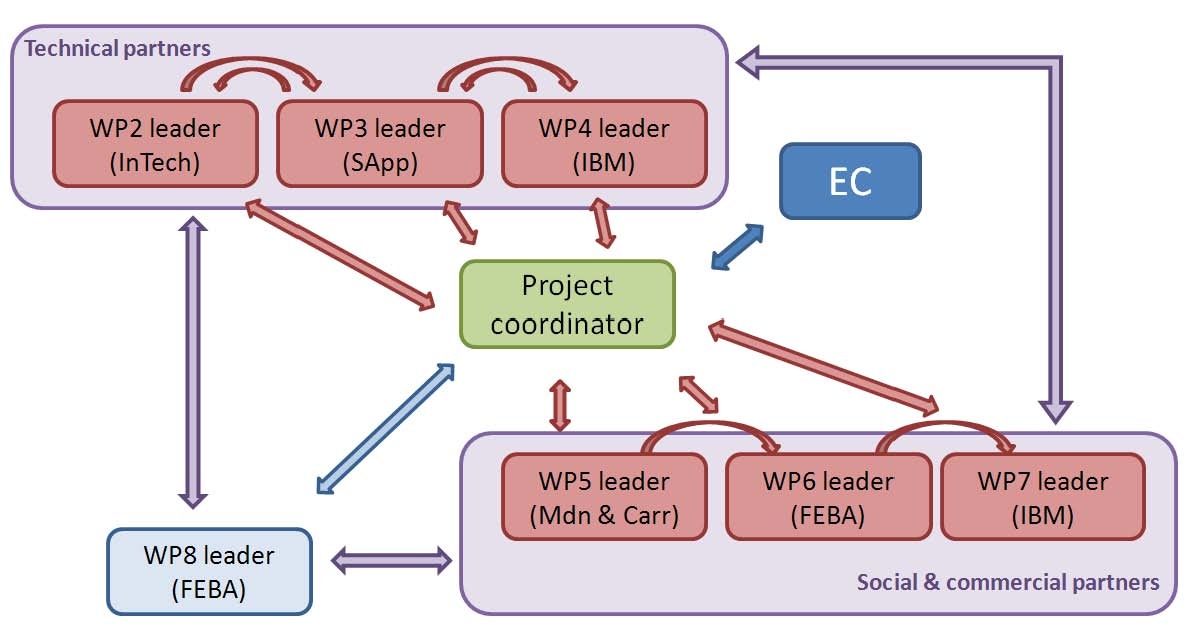
Figure 3 ISFOOD Consortium
Many of them have never worked together in previous EU funded projects, but the coordinator partner, has large experience of being coordinators of such projects. In order to run a highly efficient and successful project of this type, careful consideration has been given to its conceptual design and expertise available with its partners. The proposed consortium is well balanced and will allow for the maximum integration of knowledge, expertise and experience between the partners, and with external stakeholders through targeted efforts directed outside of the project.
The consortium encompasses world-renowned and awarded companies in the field of intelligent labeling, data collection, big databases, its data mining, assessment and management from both within and outside European Union borders.
Care has been taken to include representation of those considered as final beneficiaries of the ISFOOD service. It means association that will collect the food surplus and will use it to aid needy families. Its opinion is crucial to make ISFOOD an efficient service, because it accumulates years of experience dealing with food surplus and final recipients, managing this and consequently FEBA knows firsthand what needs and gaps have current services.
Implementation
ISFOOD is divided into eight work packages as shown in the following graph:
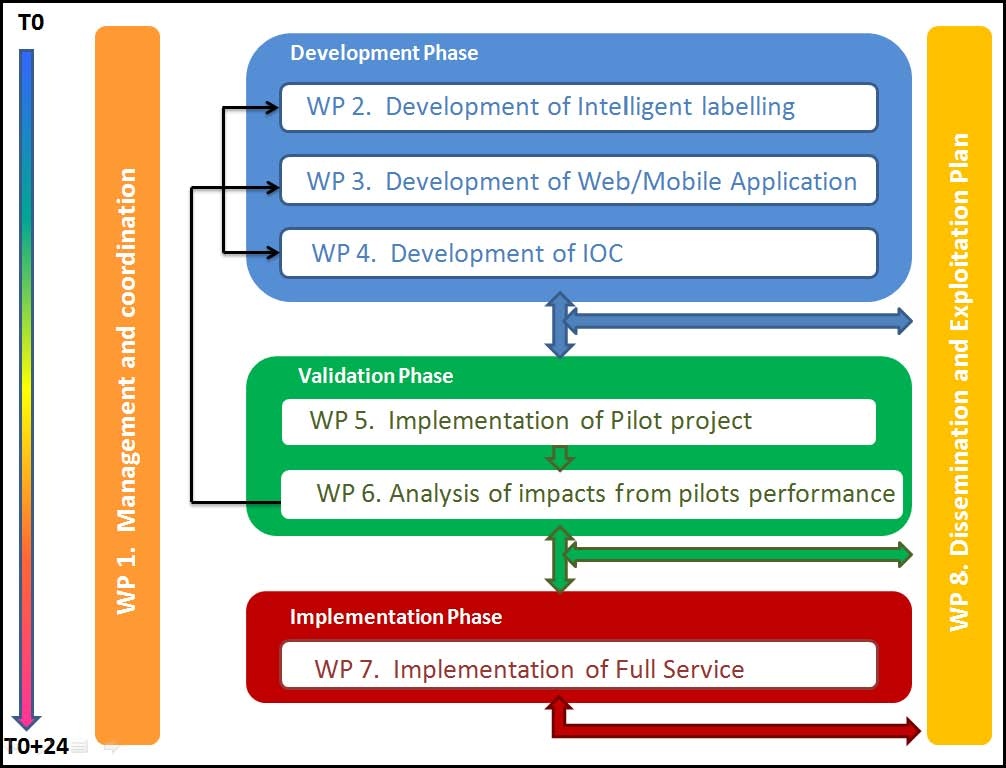
Figure 4 Distribution of ISFOOD in work packages
Each work package is responsible to perform a critical part of the project:
WP1 – Management and coordination
This work package includes the continued coordination of ISFOOD from the date of agreement signature (T0) until its final completion scheduled 24 months later (T0 +24). Its main objectives are:
- Technical coordination: monitor technical progress and results of ISFOOD compared to the resources invested and the timing compared to the work plan and establish corrective actions if necessary; monitor the service implementation; coordinate new actions derived from analysis of ISFOOD progress. Perform a quality control over all deliverables. Validation results.
- Administrative and financial coordination: detailed tracking of ISFOOD, ensuring compliance with agreed budget and schedule.
- Communication core: establishment of the appropriate communication flow within the Consortium and towards the European Commission, liaison and interlocution between all partners involved in ISFOOD.
WP2 – Development of Intelligent Labeling
This work package is a fully technical module in ISFOOD. It is designed to create and put into operation an intelligent labeling for all products sold in the hypermarkets involved on ISFOOD. The resulting labeling procedure must enable both an automatic identification of products (with the whole information about it) and an automatic transfer of detected food surplus to the IOC database. Its main objectives are:
- To design an innovative method for food labeling that allow a complete knowledge and traceability of the food surplus that is entered in ISFOOD.
- To developed a last technology label reading device with connection to web/mobile application.
WP3 – Development of a Web/Mobile application
Supermarket partners generate hourly or daily the information about food surplus that can enter on ISFOOD flow at that time. This information is stored on archives that must be uploaded to ISFOOD core database existing on IOC. The channel to convey this information and automatically load it to the IOC is a web and mobile application. This web application will be used by responsible person in those supermarkets who inventory surplus food, and in this simple way, they will send data to the IOC, which automatically interprets the information received through this application and loads it to the warehouse database.
The application will be also developed on mobile devices to take into account the possibility that ISFOOD integrates in the future providers of surplus food from other types (restaurants, hospitals, private homes, schools, small food shops…).
WP4 – Deployment of the Intelligent Operations Center (IOC)
The entire ISFOOD service must be controlled through the IOC. The IOC is responsible for receiving the labeled data from food providers through the web or mobile applications, storing and processing them, and then providing the instructions to carriers and to food receivers about how to proceed.
By taking advantage of the power of advanced analytics, asset management, and collaboration tools, IOC delivers the ability to gain insight into an environment through centralized information.
IOC will provide service managers an assessment of the general state of ISFOOD. They can identify issues that require attention and coordinate resources to respond to problems effectively.
WP5 – Implementation of Pilots Projects
Three pilot projects will be operated in three test cities. Several elements of ISFOOD have a technical component that must be checked before it enters in a productive chain. In addition, as ISFOOD is a service that deals with people who need to obtain food to live day to day, there is also a sensitive issue like the confidentiality of these people, and their right to maintain their delicate economic and social in its strict privacy.
That is why before ISFOOD is put in service and be fully operational covering all its potential, it is necessary to check the operation of each of the elements generated during the development of ISFOOD. WP5 is thought to detect errors, deficiencies or areas for improvement.
WP6- Analysis of impacts from pilots performance
This work package is not defined to detect failures of ISFOOD or technical bugs of the implemented WP2, WP3, and WP4. These tasks correspond to the pilots projects (WP5) objectives.
Work package WP6, led by the corresponding food bank partner of each location with support and involvement of all project partners, will evaluate the three pilot demonstrations and monitor the project performance. This will include evaluation of impacts and the process of implementation. A set of common Key Performance Indicators (KPIs) will be used to ensure objectively derived conclusions an easy comparison between the demonstration cities.
Best practices and future implementation guidelines will be generated to aid further cities with their implementations of ISFOOD.
Several and different impacts of ISFOOD first stage implementation will be evaluated, from food waste reduction, the impact on the receivers families, new technical developments, human resources availability and performance and compliance and scalability of business plan.
This work package is important in determining the improvements that ISFOOD has reported on the current existing food bank services and the impact of technical innovations developed and how they can influence the market in the near future.
From all these points, an analysis of new requirements and modifications of implemented features in ISFOOD will be carried out.
WP7- Deployment of full operational service
As the final stage of ISFOOD proposal, this work package corresponds to the provision of this proposed service in a full operational capability. Moreover, three other outputs will be generated:
- A complete ISFOOD maintenance plan.
- A plan for the exportation and scalability of the service, both in the countries involved in this proposal and in other EU countries.
- Future enhancements to medium and long term.
WP8 – Dissemination and exploitation plan
WP8 will develop a series of communication activities that will ensure that project results are adequately disseminated among relevant stakeholders and that ISFOOD is promoted as a solution to food waste and to lack of access to adequate food.
The ISFOOD consortium has marked as a main task the execution of the exploitation activities in order to have significant socio-economic impact, not only on the pilots sites involved, but also on all UE. Standardization of such an architecture and exploitation of knowledge and technical results is covered in this work package.
The objectives for the dissemination strategy are:
- To demonstrate that ISFOOD is exportable to new cities, with a similar impact on the food resource management efficiency and social advantages.
- To convince local governments of the great benefits that ISFOOD can provide to its city, from the environmental benefits point of view and also from the social point of view (reduction of food poverty).
- Increase the free recruitment of new food surplus providers by promoting its role on ISFOOD, highlighting the corporate social responsibility and the benefits that these commercial companies can obtain from the marketing of its social commitment.
- To encourage policy makers to promote tax benefits for those companies that collaborate on similar projects.
The potential target audiences for the communication activities will be:
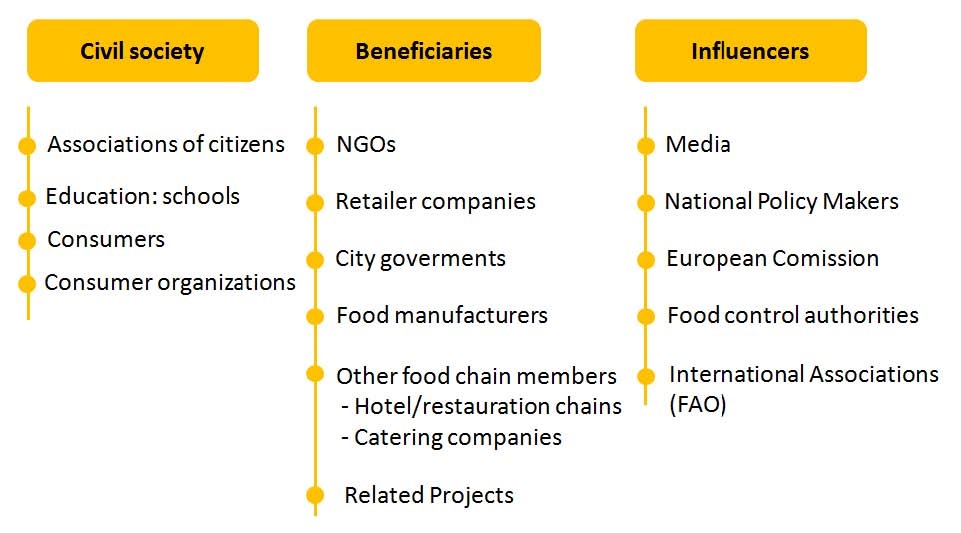
Final objectives
ISFOOD main objective aims to reduce surplus food not exploited by 85% compared to the current one in those cities where it is implemented (in Spain, Portugal and Italy), and to ensure the supply of staple foods for the 70% of the families on these cities that, because of their level of economic income, are below the poverty line.
Other objectives, secondary or derived, are:
- Definition of indicators to manage urgent needs optimally: deliver products to those most in need from a comprehensive view of all needs.
- Improvement of the dissemination of intelligent labeling and bring this technology to the mass market. In addition, defining of standards for a complete traceability of all types of food (fresh, nonperishable, cooked…). ISFOOD will create a new tagging system that will allow intelligent monitoring and automatic management of product flow within the service.
- Improvement of the social responsibility of enterprises engaged in food marketing. The aim is to achieve adherence to the service for the 70% of these companies.
- ISFOOD will create a new mobile and web application to transfer label information to an Intelligent Operator Center (IOC), incorporating to database the food surplus information.


